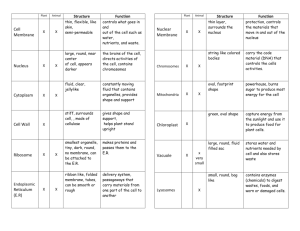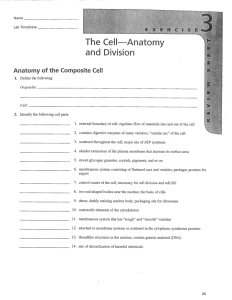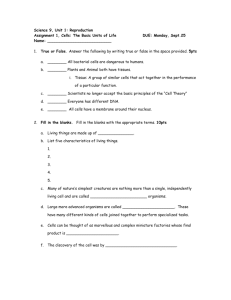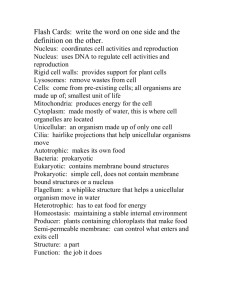Review
advertisement
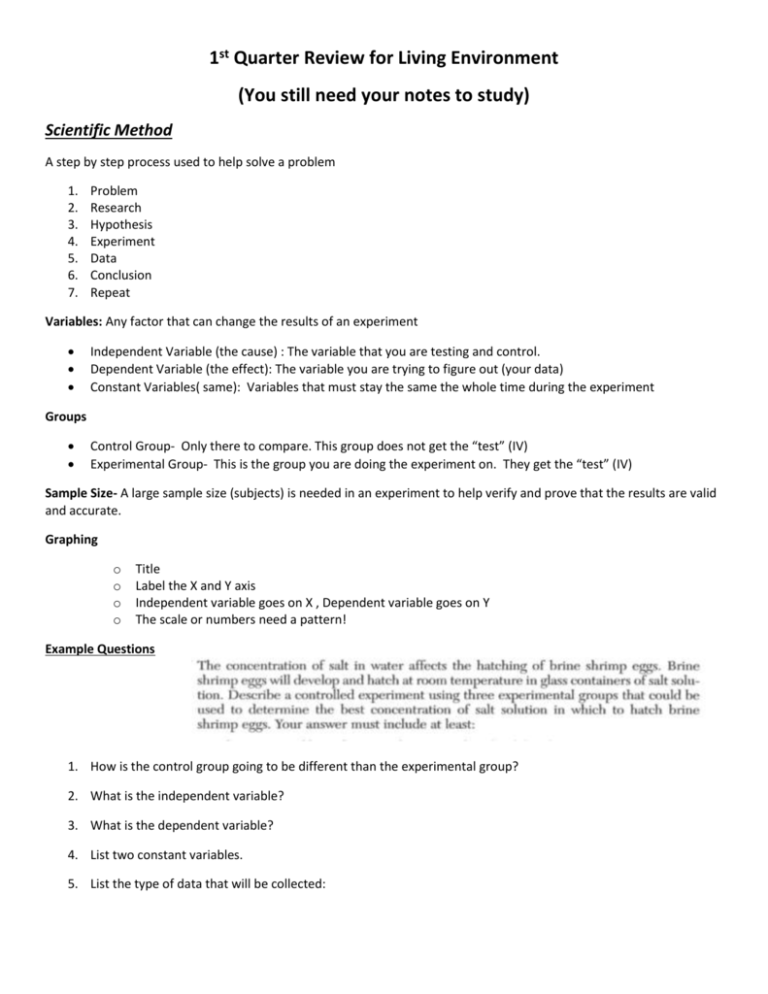
1st Quarter Review for Living Environment (You still need your notes to study) Scientific Method A step by step process used to help solve a problem 1. 2. 3. 4. 5. 6. 7. Problem Research Hypothesis Experiment Data Conclusion Repeat Variables: Any factor that can change the results of an experiment Independent Variable (the cause) : The variable that you are testing and control. Dependent Variable (the effect): The variable you are trying to figure out (your data) Constant Variables( same): Variables that must stay the same the whole time during the experiment Groups Control Group- Only there to compare. This group does not get the “test” (IV) Experimental Group- This is the group you are doing the experiment on. They get the “test” (IV) Sample Size- A large sample size (subjects) is needed in an experiment to help verify and prove that the results are valid and accurate. Graphing o o o o Title Label the X and Y axis Independent variable goes on X , Dependent variable goes on Y The scale or numbers need a pattern! Example Questions 1. How is the control group going to be different than the experimental group? 2. What is the independent variable? 3. What is the dependent variable? 4. List two constant variables. 5. List the type of data that will be collected: Living and Nonliving Organisms Life Functions-Know all the life functions (RRREGNTS) Reproduction, Respiration, Regulation, Excretion, Growth, Nutrition, Transport, Synthesis Metabolism- All the chemical reactions that occur in an organism (all the life functions) Cell Theory 1. Cells are the basic units of life 2. Cells make up the structure and function of all living things 3. Cells come from preexisting cells Viruses are exceptions to the cell theory- can not reproduce on their own. Cell Organelles- Know their functions Cell membrane, cell wall, cytoplasm, mitochondria, nucleus, ribosomes, Golgi Body, Endoplasmic Reticulum, Vacuoles, Lysosomes, Centrioles Prokaryotes- no nucleus (bacteria) Eukaryotes – nucleus (animals, plants, fungi, protists) Homeostasis- maintaining a proper internal balance with regards to the external environment. Controlling temperature, blood sugar, water balance, breathing rate, etc. Cell Membrane and Transport Cell Membrane parts- phospholipids, proteins and receptors Active vs Passive Transport (know the difference) Passive Transport- (no Energy, High to low) Diffusion- movement of small molecules – glucose, water, oxygen Osmosis- movement of water Water moves toward salt Facilitated Diffusion- the use of protein channels Receptors- Cell communication Hormones and Neurotransmitters send the messages The chemicals match with a specific receptor because of the correct shape. receptors






